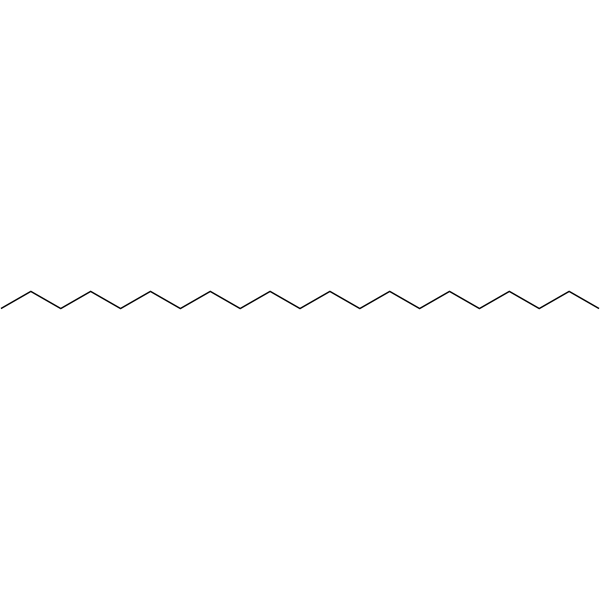
Heneicosane
CAS No. 629-94-7
Heneicosane( henicosane | N-HENEICOSANE )
Catalog No. M29406 CAS No. 629-94-7
Heneicosane is a pheromone that inhibits the production of aflatoxins. Heneicosane is an aroma component isolated from Streptomyces philanthi RL-1-178 or Serapias cordigera.
Purity : >98% (HPLC)
 COA
COA
 Datasheet
Datasheet
 HNMR
HNMR
 HPLC
HPLC
 MSDS
MSDS
 Handing Instructions
Handing Instructions
| Size | Price / USD | Stock | Quantity |
| 500MG | 37 | In Stock |


|
| 1G | Get Quote | In Stock |


|
Biological Information
-
Product NameHeneicosane
-
NoteResearch use only, not for human use.
-
Brief DescriptionHeneicosane is a pheromone that inhibits the production of aflatoxins. Heneicosane is an aroma component isolated from Streptomyces philanthi RL-1-178 or Serapias cordigera.
-
DescriptionHeneicosane is a pheromone that inhibits the production of aflatoxins. Heneicosane is an aroma component isolated from Streptomyces philanthi RL-1-178 or Serapias cordigera.
-
In Vitro——
-
In Vivo——
-
Synonymshenicosane | N-HENEICOSANE
-
PathwayGPCR/G Protein
-
TargetAntibacterial
-
RecptorAntifungal
-
Research Area——
-
Indication——
Chemical Information
-
CAS Number629-94-7
-
Formula Weight296.583
-
Molecular FormulaC21H44
-
Purity>98% (HPLC)
-
SolubilityIn Vitro:?DMSO : 2.5 mg/mL (8.43 mM)
-
SMILESCCCCCCCCCCCCCCCCCCCCC
-
Chemical Name——
Shipping & Storage Information
-
Storage(-20℃)
-
ShippingWith Ice Pack
-
Stability≥ 2 years
Reference
molnova catalog



related products
-
FR194738
FR194738 is an inhibitor of squalene epoxidase with an IC50 of 9.8 nM in HepG2 cell homogenates.
-
Imipenem monohydrate
Semisynthetic thienamycin that has a wide spectrum of antibacterial activity against gram-negative and gram-positive aerobic and anaerobic bacteria.
-
Murepavadin
Murepavadin (POL7080)?is a highly potent, specific, macrocycle Pseudomonas antibiotic for the treatment of bacterial infections caused by Pseudomonas aeruginosa.



 Cart
Cart
 sales@molnova.com
sales@molnova.com


